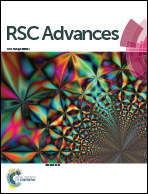Effects of diluent gases on sooting transition process in ethylene counterflow diffusion flames
Abstract
The impacts of adding diluent gases (nitrogen, carbon dioxide, and helium) either to the fuel side or the oxidizer side on the sooting transition process in ethylene counterflow diffusion flames are investigated experimentally and numerically. A series of ethylene flames ranging from non-sooting to heavy-sooting are studied by gradually increasing the oxygen concentration on the oxidizer side. The optical method is used to analyze flame images, determining the sooting transition process. It is found that whether CO2 is added to the fuel side or the oxidizer side, the sooting transition process is delayed significantly. This process is slightly delayed when He is added to the fuel side, however, it is promoted when He is introduced to the oxidizer side. The numerical results show that in CO2-diluted flames, the mole fraction of the main soot precursors C2H2, C3H3, and C6H6 are reduced, which leads to the delay of soot formation. In addition, the H radical decreases while the OH radical increases, both of them are important for soot formation. In He-diluted flames, the concentration of C2H2, C3H3, and C6H6 decreased, as well as H and OH radicals. Moreover, adding He obviously changes the distribution area of products.



 Please wait while we load your content...
Please wait while we load your content...